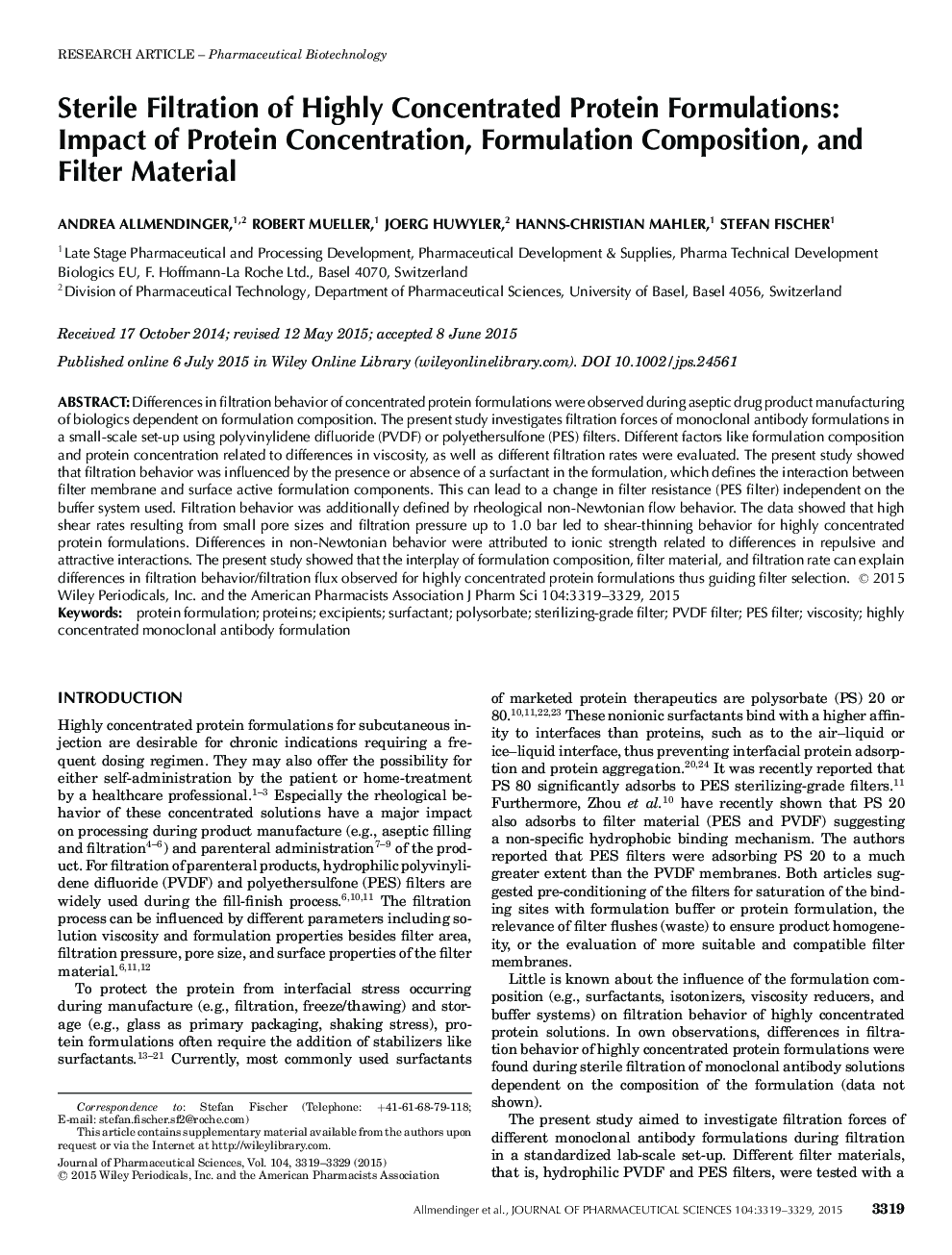| Article ID | Journal | Published Year | Pages | File Type |
|---|---|---|---|---|
| 10161980 | Journal of Pharmaceutical Sciences | 2015 | 11 Pages |
Abstract
Differences in filtration behavior of concentrated protein formulations were observed during aseptic drug product manufacturing of biologics dependent on formulation composition. The present study investigates filtration forces of monoclonal antibody formulations in a small-scale set-up using polyvinylidene difluoride (PVDF) or polyethersulfone (PES) filters. Different factors like formulation composition and protein concentration related to differences in viscosity, as well as different filtration rates were evaluated. The present study showed that filtration behavior was influenced by the presence or absence of a surfactant in the formulation, which defines the interaction between filter membrane and surface active formulation components. This can lead to a change in filter resistance (PES filter) independent on the buffer system used. Filtration behavior was additionally defined by rheological non-Newtonian flow behavior. The data showed that high shear rates resulting from small pore sizes and filtration pressure up to 1.0Â bar led to shear-thinning behavior for highly concentrated protein formulations. Differences in non-Newtonian behavior were attributed to ionic strength related to differences in repulsive and attractive interactions. The present study showed that the interplay of formulation composition, filter material, and filtration rate can explain differences in filtration behavior/filtration flux observed for highly concentrated protein formulations thus guiding filter selection. © 2015 Wiley Periodicals, Inc. and the American Pharmacists Association J Pharm Sci 104:3319-3329, 2015
Related Topics
Health Sciences
Pharmacology, Toxicology and Pharmaceutical Science
Drug Discovery
Authors
Andrea Allmendinger, Robert Mueller, Joerg Huwyler, Hanns-Christian Mahler, Stefan Fischer,
